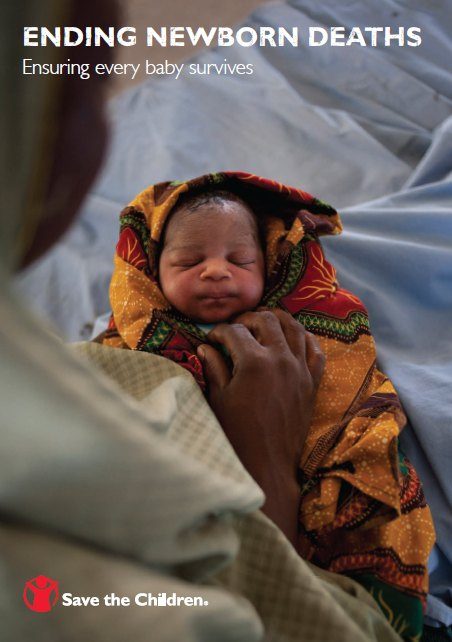SUMMARY
This is AI generated summarization, which may have errors. For context, always refer to the full article.

MANILA, Philippines – First the good news. Globally, there has been significant progress in ending child deaths, or what is known as child mortality.
According to the 2013 Child Mortality Report, since 1990, the number of children who die every year before they reach their 5th birthday has been halved from 12.6 million to 6.6 million. (WATCH: Lend a hand, help kids reach their 5th birthday)
This achievement has been attributed to a combination of intervention measures that include immunization, family planning and nutrition, treatment of childhood illnesses plus cohesive efforts of governments, the health sector and international organizations.
However, one aspect of infant care has been overlooked: the treatment and safeguarding the health of newborns at birth and during their first month of life.
The Child Mortality Report estimates that in 2012, there were an estimated 2.9 million babies who died within 28 days of being born.
“One million babies around the world died within 24 hours, their first day of life,” Dr. Amado Parawan, health and nutrition advisor of Save the Children, said.
Premature birth, complications during birth and infections have been identified as the causes for these deaths. “But this number (1 million) does not include the babies who were stillborn. If we count them, this number would be even higher,” Parawan said.
In 2012, there were a reported 1.2 million stillbirths – babies who died before they were even born.
Globally, the combined number of newborn deaths on the first day of life and stillbirths total to 2.2 million.
These statistics are detailed in a report “Ending Newborn Deaths: Ensuring Every Baby Survives,” which was launched by Save the Children. According to the organization, reducing newborn deaths can be achieved by addressing the underlying cause of newborn death: the inequality in healthcare access between the rich and the poor.
Measures should also be made to address related issues such as maternal undernutrition, access to RH services and prevention of teen pregnancies.
Newborn deaths in the Philippines
In the Philippines, 12 in 1,000 babies die during their first 28 days of life.
The Philippines is among the top 10 countries in the world where this is greatest inequality in newborn deaths between the richest and poorest populations.
Premature births and low birth rate have been identified as the leading cause of death for newborns.
“Babies with a low birth rate are at the highest risk for death,” Parawan stressed.
The Philippines is reported to have the highest low birth weight among the ASEAN countries. (READ: Hungry and pregnant in the PH)
Development experts say that half of these deaths could be prevented if the mother and baby are provided with free quality healthcare, if deliveries are attended by a skilled mid-wife and access to reproductive health care services is improved.
Less than 30% of babies in the poorest sectors of the Philippines are delivered by a skilled birth attendant. In contrast, in the richest economic quintiles, nearly 100% of births are attended by a mid-wife or doctor.
“The root problem is the lack of skilled health workers with the right equipment and medical supplies to support mothers, especially in the most rural and remote areas where they are most needed,” Ned Olney, country director of Save the Children, explained.
Sophie Angeles, a mid-wife at the Caloocan City Health Office can attest to the difficulty of addressing the pregnancy and pre/post natal needs of her community. Her village, Barangay 176 in Caloocan, is considered one of the country’s largest barangays with a population of around 250,000.
“There are only a few of us mid-wives servicing the entire barangay. We can’t attend to everyone – even we really want to,” said Angeles. “For emergency situations, the nearest hospital is very far away and sometimes it can take one to two hours, depending on traffic, to get there.” (READ: PH needs to accelerate maternal health progress)
The link between maternal health and infant health
Ultimately, the challenge in addressing newborn death will also require improving maternal health. “The survival of mothers and their newborns are closely linked,” Olney said. (READ: Young, pregnant and poor)
As early as 2009, development experts had predicted that the Philippines will not reach its MDG goal of reducing the maternal mortality ratio to 55 per 100,000 live births.
According to the latest available Family Health Survey from 2011, maternal mortality ratio remains high, with 221 maternal deaths per 100,000 live births in 2011 compared to 162 maternal deaths in 2006.
Save the Children called for ensuring that every birth is attended to by trained and equipped health care workers by 2025 and issuing a declaration to end all preventable newborn mortality and 1.2 million stillbirths during labor. – Rappler.com
Ana P. Santos is a regular contributor for Rappler aside from her Dash of SAS (Sex and Sensibilities) column. Follow her on Twitter at @iamAnaSantos.
The image used is from Shutterstock.
Add a comment
How does this make you feel?

There are no comments yet. Add your comment to start the conversation.